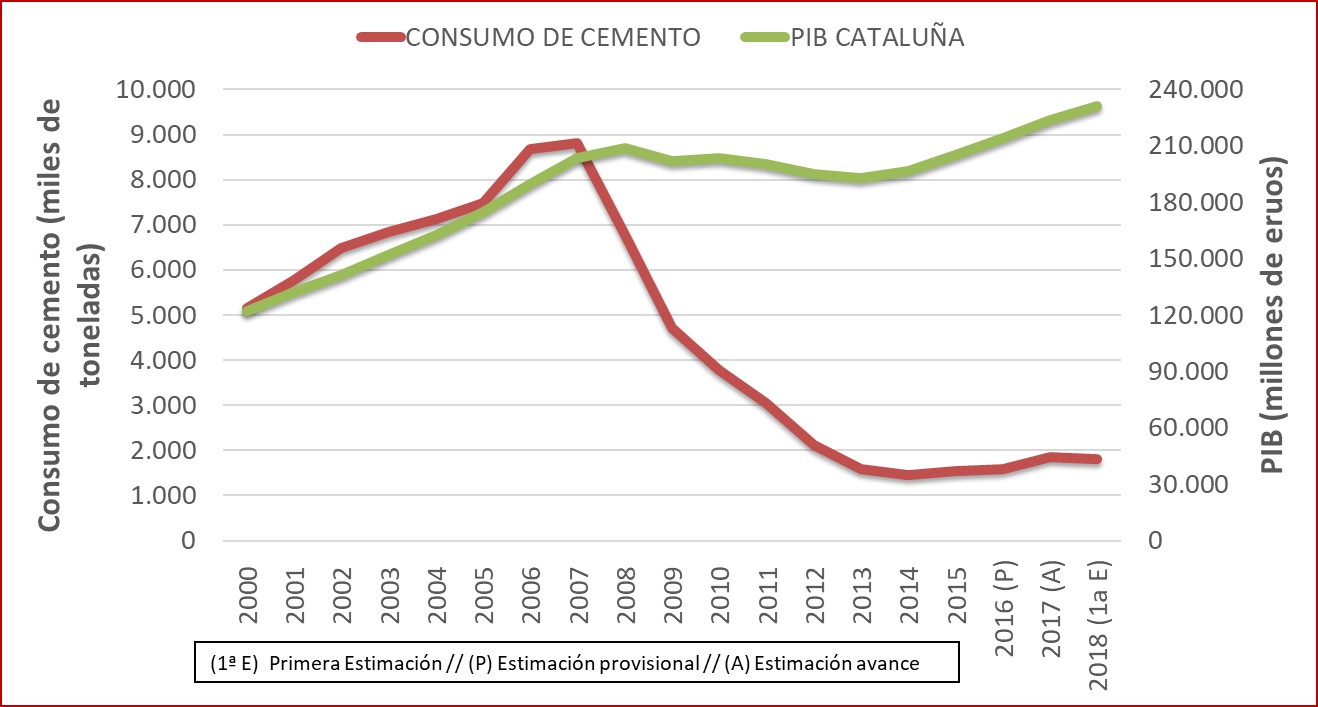Macroeconomic forecasts that point to a slowdown in the national economy, after 6 years of sustained growth of around 3% of GDP, trap the cement sector in a compromised situation. In fact, unlike what happened with the industry as whole, Catalan factories still remain at very low levels of activity, as a result of the previous economic crisis of 2008. It can be said, without a doubt, that the industry cement has skipped the economic recovery cycle of the last six years, and nothing suggests that the situation can improve in the next few years.
The figures for the closing of the third quarter of 2019 confirm this situation. Cement production, which exceeded 9.7 million tons in 2007, has remained in the last 12 months at only 3.1 million (a 68% drop). On the other hand, domestic market consumption remains at a minimum: from 8.8 million tons in 2007, it has now reached 2.1 million tons. Here, the reduction is even more pronounced, and reaches 76%.
The evolution of the activity of the cement factories is closely linked to the Administration’s investments in public works. In recent years, despite the recovery experienced by the national economy, the bidding of new infrastructure or maintenance projects that already work have been minimal. This entails a marked risk of obsolescence of these facilities, which compromise the country’s future competitiveness, which could seriously affect not only the recovery of the cement sector but also the growth of the economy as a whole.

